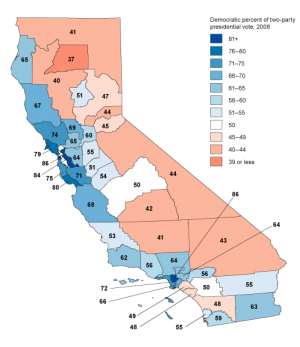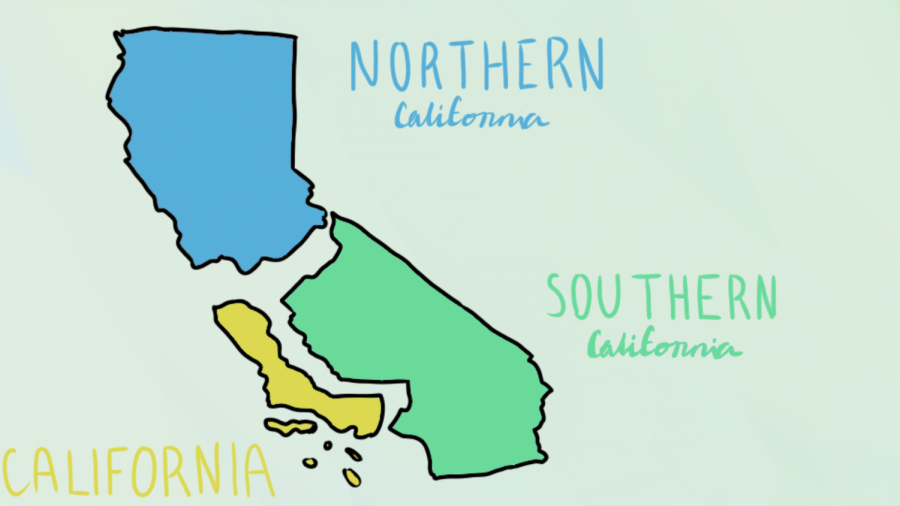Cal 3 Goes To the Next Degree
“Cal 3” is an initiative that is aiming to split California into three states due to poor public school systems and a lack of representation.
Over the past year, California residents have had a distinct way of dealing with the lack of representation within their state and their motivation to become independent from the United States. In 2017, the “Yes California” campaign aimed to gain as many ballot signatures as possible in order for California to become its own country. As of now, Tim Draper, Silicon Valley capitalist, has gained double the number of ballots that he needed to send a proposal to the legislature to split up California into three states: Northern California, California and Southern California. However, what many fail to take into account when splitting such a populous state is how complicated it can be to work with the local government and laws.
As of now, California is home to almost 40 million people, making it one of the most populated states in the nation. When having such a populated area, regions often go underrepresented due the vast differences in social, economic and political standards, such as the Northern and Southern regions of California. For instance, Northern California is

known for its agriculture and the infamous Silicon Valley, home to innovation, business and technology. However, Southern California is on the complete opposite side of the spectrum as it mainly focuses on the industry of media/film and is home to many low-income residents. With such different atmospheres and the huge amount of people that reside in California, it often becomes difficult to create an accurate representation of the residents. For example, most of California has conservatives dispersed in more rural areas and liberals are centered in major cities, like San Francisco or Los Angeles. This often becomes difficult for many since a lot of the residents differ tremendously in their political standings and neighborhood environment.
“The splitting of California is not worth it. Almost everywhere you go there will always be a certain area that goes underrepresented,” sophomore Celine Perez said.
Despite the lack of representation many California residents face, many obstacles that cannot be ignored soon come to light when discussing the idea of splitting California. Throughout the course of six years, California has gone through its driest season ever, causing a lack of water resources in many rural areas of Southern California. In order to improve access to water, California has created many projects, such as California WaterFix and State Project, to provide residents with water. When taking this into account, if Cal 3 were to be approved, then California would have to disperse or find alternative water resources because these old water projects would no longer be in place due to separation.
“I highly doubt that California will split up into three different states because I don’t think Congress will be able to approve a proposal that consists of so many expenses and complications,” junior Mia Galex said.
The most significant factor that determines the separation of California is the approval of Congress. However, when deciding on a proposal like Cal 3, Congress has to think about how it affects them. If California were to separate, then Congress would have to deliberate on how to create three new separate governments and how the electoral votes would affect them. Adding three new states would set a divide between conservatives and liberals and set an unrest within Congressional representatives, meaning that it is highly unlikely that Congress will pass Cal 3.
Despite these obstacles, the Cal 3 initiative is insistent on improving California’s education and economy. However, as of now, California is one of the leading sources of income in the produce industry for the U.S. Additionally, California’s economy is already booming—so why would supporters of Cal 3 even think of separating California? If one were to count California as an independent state from the United States, it would be categorized into the top 10 best economies in the world. On the other hand, Cal 3 would mean leading tourist attractions, like Hollywood, would not contribute to California’s economy. Instead, it would be incorporated into Southern California’s economy, just one example of the negative economic effects this split could have on the newly separated states.
When it comes to education, California has one of the lowest literacy rates in the United States; therefore, Cal 3 aims to promote educational regulations to prevent such rates through the separation of California, but what the initiative fails to think about is the other complication that comes with this. Separating California to create better public schools will, if anything, become more difficult. In fact, due to the other problematic factors that come with Cal 3, efforts to create more functional public schools will most likely not be a prominent task on Cal 3’s agenda since there are other complications that are more time-sensitive. Instead of Cal 3, residents should create a proposal to increase state funding in education if that is their main focus, rather than making matters worse by splitting up the state.
Overall, Cal 3 may have the right intentions, but it comes with too many expenses and complications that cannot be fixed easily. As of now, it seems very unlikely that Congress will pass such a complicated proposal.
Your donation will support the student journalists of Coral Gables Senior High School. Your contribution will help us cover our annual website hosting costs.

Miguel Lemus is a junior in the International Baccalaureate (IB) program at Coral Gables High School. Lemus is excited to see what the school year will...








